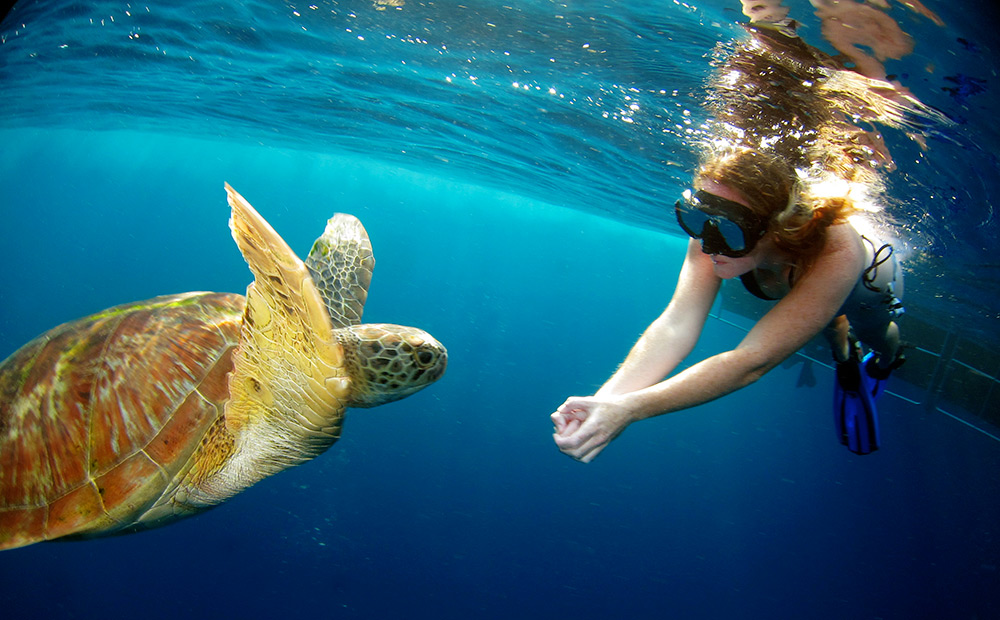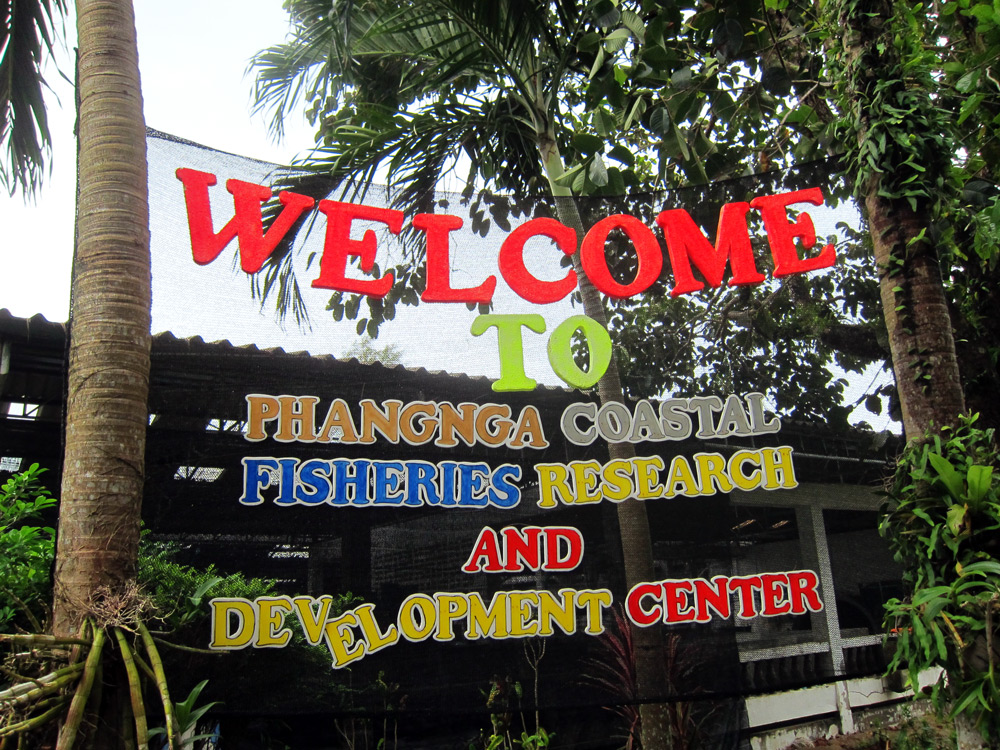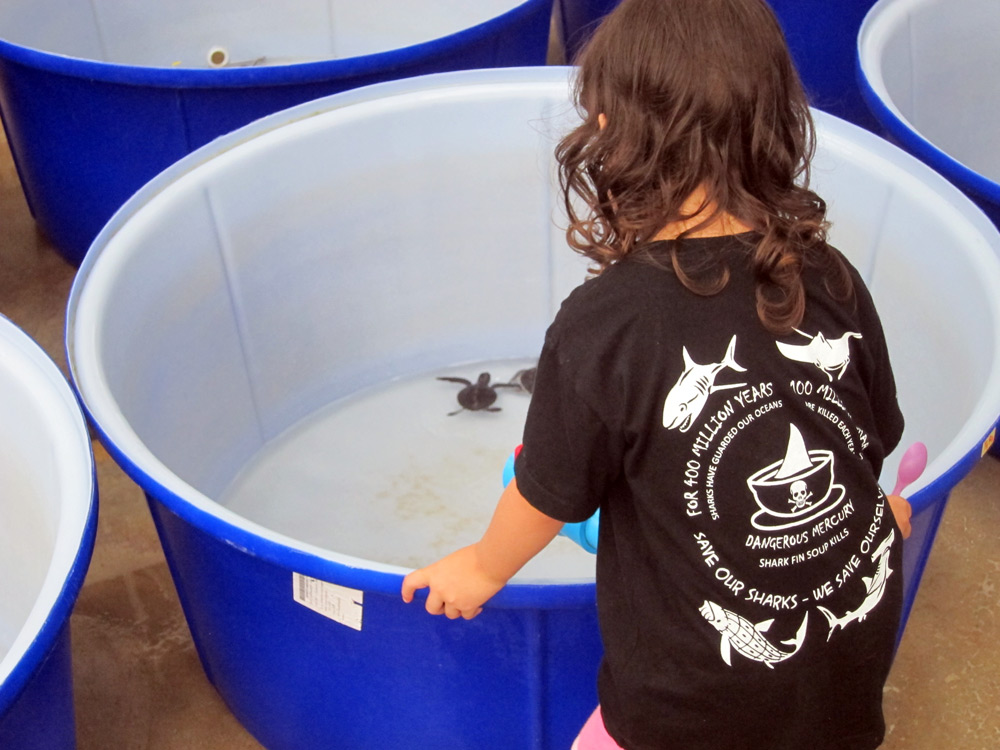
The most famous Khao Lak tours usually include Elephant Trekking and waterfalls, but why not take a step off the beaten track and try something different? The Thai Muang Turtle Sanctuary is a wonderful attraction for visitors of all ages.
The Andaman Sea is home to four species of turtle, the most common are Hawksbill and Green turtles, though occasionally there are sightings of Olive Ridley and Leatherback turtles.
The white sandy beaches of the Similan Islands and the Phang Nga coastline are important nesting areas for both Hawksbill and Green Turtles. The nesting season runs from October to March, peaking from mid November to mid January. There are important nesting sites at both the Similan Islands and Surin Islands. On the Phang Nga coastline not far from Khao Lak there are also nesting sites at Thai Muang Beach and on the beaches of Koh Phra Thong.
Like other turtle species found around the world, their numbers are in serious decline in the Andaman Sea. The main factors contributing to this are egg poaching, over fishing, pollution, habitat degradation and being caught by fishermen as bycatch. This is despite the fact that all four turtle species are protected under Thai Law.
Thai Muang Turtle Sanctuary
The Phang Nga Coastal Fisheries Research and Development Centre run a turtle sanctuary in nearby Thai Muang. Thai Muang is located approximately 30km south from Khao Lak on Highway 4.
The Centre was established in 1985 as the Phang Nga Mollusk Culture Research Centre to produce cockles, oyster seeds and shrimp larvae. In 2002 the centre was upgraded to the Coastal Fisheries Research Centre.
A Visit to the Turtle Sanctuary
While visiting Khao Lak and looking for something fun and educational for the whole family to enjoy, the Phang Nga Coastal Fisheries Research and Development Centre is an excellent choice. It is open to visitors daily and is free to enter.
There are numerous large concrete saltwater holding tanks where guests can view different hatches of turtles. Through their first few vulnerable months the juvenile turtles stand a much better chance of survival at the sanctuary, as they are safe and away from predators. They are kept at the turtle sanctuary until they reach a minimum age of eight months old. After this point, for a donation to the research centre, visitors can release a turtle into the sea.
There are even rehabilitation tanks for sick or injured turtles as well as a large tank that houses a saltwater crocodile found in a nearby village.
As well as turtles, the centre reserves many tanks for their Anemone fish breeding programme. There are numerous species on show including the popular Anemone Clownfish, known more affectionately as Nemo. Clownfish spawn easily in captivity, providing they have a good environmental habitat and suitable nutritious feed. There are many other tropical fish species bred and researched at the centre, all of which can be viewed by the public.
Not all the anemone fish are sold to the aquarium trade. After becoming acclimatised to living in host anemones and being trained to feed on natural food, the anemone fish are released into the sea.
How to Get to the Turtle Sanctuary
The Phang Nga Fisheries Research and Developement Centre is easily accessible from Khao Lak. All buses heading south on highway 4 and that stop at Khao Lak will also stop in Thai Muang. A private taxi from Khao Lak should cost approximately 000THB for the round trip. If you are proficient on a motorbike it is easy to find the centre if you wish to make your own way there.
Turtle Facts
Olive Ridley
Description:
The smallest of Thai turtles.
Juveniles are charcoal grey while the adults are a dark grey green
Size:
Length:
62-70cm
Weight:
71-100lbs
Life span:
Approximately 50 years
Food:
Omnivore diet of crustaceans, mollusks, tunicates, fish, crabs and shrimp
Nesting:
Beaches of the Andaman Sea
Did you know?
Male Olive ridley’s can be distinguished from females by their tales which stick out beyond their shell
Green Turtle
Description:
A large weighty sea turtle with a wide, smooth shell. Named after the green colour of its skin. they usually have a brown or olive shell.
Size:
Length up to 150cm
Weight:
Up to 700lbs
Life span:
Over 80 years
Food:
Herbivorous, feeding on sea grasses and algae. Juveniles will also eatinvertibrates like crabs, jellyfish and sponges
Nesting:
the most common turtle to nest on Thailand’s beaches
Did you know?
Like other sea turtles, the Green turtle can not pull it’s head into it’s shell
Turtle Sanctuary Gallery
- Get close up with turtles
- Welcome to the …..
- Tanks of Clownfish for the Kids
- Almost ready for the Andaman Sea
- Hello turtles
- Approaching the age for release
- An injured turtle recovers in the sanctuary
- Large tanks for the turtles
- Feeding procedures
- Fish food for the young turtles
- Turtle submerges
- Info about Ridley’s Turtle
- Wonderful Phang Nga Coastal Fisheries
- Model Leatherback Turtle
- A great day our for children
- Also an educational day out
- Turtles in the sanctuary enjoy a safe start to life
- A turtle lovers dream
- Youngest additions to the centre
- Learn about turtles
- Info available at the Fisheries Centre
- The centre provides shelter to other reptiles as well
- Freshly hatched turlte
- Injured turtles under go rehabilitation
Fisheries Research and Development Centre Responsibilities
- Research coastal aquaculture
- Inspect fisheries products
- Control standards for hatcheries and farming
- Certify movement documents for marine fry and shrimp products
- Enhance natural stocks through the hatchery process and restocking program
- Produce seed supply to support farmers in the local area
- To conserve threaten and endangered marine species
Turtle Sanctuary Contact Details
Phang Nga Coastal Fisheries Research and Development Centre
164 Moo 9 Thai Muang,
Phang Nga 82120 Thailand
Tel: +66 (0) 76 432 212
Phang Nga Coastal Fisheries Website
Mountain Biking Tour that includes a visit to the Thai Muang Turtle Sanctuary
The Thai Muang Turtle Sanctuary features on the Thai Muang Turtles and Waterfalls Mountain Biking Tour.






























